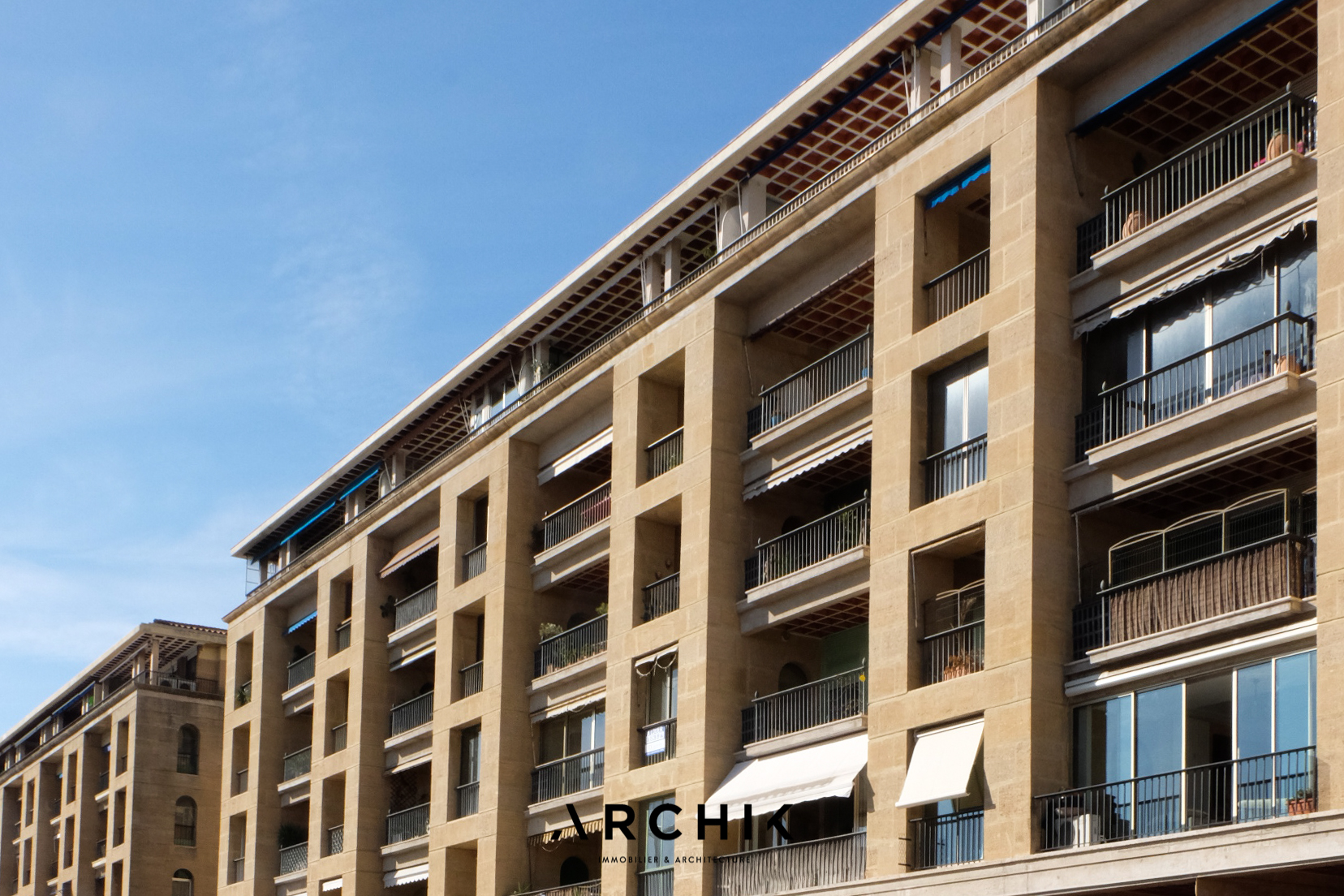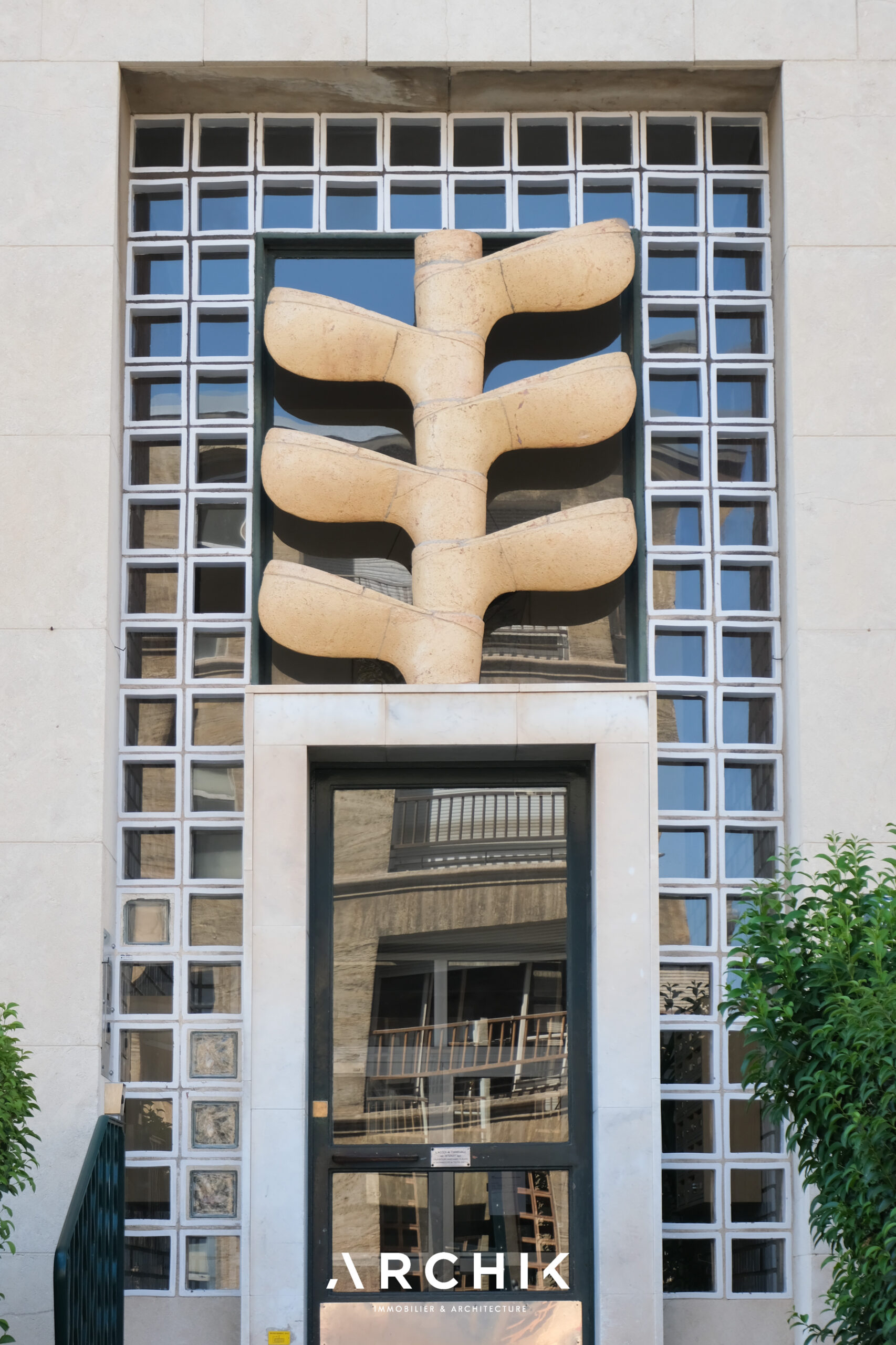
Projet de l’architecte Fernand Pouillon dans le cadre de la reconstruction d’après-guerre, les immeubles 42-66 Quai du Port à Marseille sont aujourd’hui inscrits au titre des Monuments Historiques.
Érigés sur deux rangs et achevés en 1954, les bâtiments présentent une unité architecturale évidente. Leur architecture, d’une géométrique simpliste, est rythmée par une façade alternant loggias aux claustras en terre cuite, appareillages lisse de pierre, et plafonds caissonnés.
Ceux situés en front de mer abritent en rez-de-chaussée une galerie couverte sous arcades, accueillant commerces, bars et restaurants, face au Vieux- Port.
Encadrant l’Hôtel de Ville, ces immeubles sont devenus de grandes personnalités du Vieux-Port.

Né en 1912 et mort en 1986, l’architecte et urbaniste français Fernand Pouillon fut l’un des grands bâtisseurs de l’après-guerre. Précurseur du concept de développement durable, il prendra soin sur chacun de ses chantiers, de faire appel à l’artisanat local, il collabore avec des artistes sculpteurs, des céramistes et des paysagistes. Ses réalisations se parent de matériaux durables et ont le souci de respecter le paysage naturel. Dans les années 1945, il participe à la reconstruction du Vieux-Port de Marseille et construit de nombreux immeubles du quai du Port de la Cité phocéenne dont un est classée Monument Historique. On compte 38 de ses réalisations labellisées Patrimoine du XXe siècle – 18 en Provence-Alpes-Côte d’Azur. Contraint de s’exiler pour les dernières années de sa carrière, il œuvre sur de nombreux projets en Algérie notamment des projets hôteliers et touristiques.



